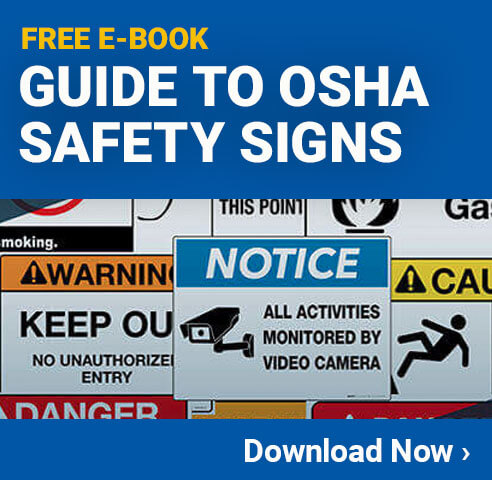
Text From Infographic
Heat Stress
What is it and how to prevent it.
High temperatures can be dangerous and even fatal at work. In 2015, exposure to environmental heat led to 2,830 nonfatal occupational injuries and illnesses, as well as 37 work-related deaths.
What is heat stress?
The human body relies on its ability to get rid of excess heat to maintain a healthy internal body temperature through sweating and increased blood flow to the skin. If heat dissipation does not happen quickly enough, the internal body temperature keeps rising, resulting in heat stress.
Severities of heat-related illnesses
Heat Stroke
Heat stroke is the most dangerous and severe forms of heat-related illness and can be fatal if treatment is delayed.
- High body temperature (103°F or higher)
- Hot, red, dry, or damp skin
- Fast, strong pulse
- Headache
- Dizziness
- Nausea
- Confusion
- Losing consciousness (passing out)
Heat Exhaustion
- Heavy sweating
- Cold, pale, and clammy skin
- Fast, weak pulse
- Nausea or vomiting
- Muscle cramps
- Tiredness or weakness
- Dizziness
- Headache
- Fainting (passing out)
Heat Cramps
- Heavy sweating during intense exercise
- Muscle pain or spasms
Sunburn
- Painful, red, and warm skin
- Blisters on the skin
Heat Rash
- Red clusters of small blisters that look like pimples on the skin (usually on the neck, chest, groin, or in elbow creases)
Preventing Heat Related Illnesses
Here are some ways employers can prevent illnesses caused by heat stress:
TAKE FREQUENT BREAKS
Arranging frequent breaks that include provided water and are in air-conditioned or shaded areas
PROVIDE DRINKING WATER
Providing and drinking water every 15 minutes (it is recommended to get at least one pint per hour); avoid beverages that contain alcohol or caffeine, since these can cause dehydration.
PROVIDE LIGHT CLOTHING
Providing and wearing light and/or loose clothing that provides cooling.
MODIFY WORK SCHEDULES
Modify work schedules to begin and end earlier, avoiding the most intense times of the day.
GRADUALLY INCREASE WORKLOAD
Gradually increase the workload for workers who have been away from work or not been exposed to hot conditions previously so they can adapt; OSHA recommends to begin with 20% of their regular workload for the first day and slowly increase by 20% each following day.
PROVIDE SHADE
Finding or providing shade and using other means of blocking out direct sunlight and other sources of heat.
IMPLEMENT A BUDDY SYSTEM
Train supervisors and workers about monitoring for heat stress, then implement a buddy system where workers observe each other for signs of heat intolerance. Also require workers to conduct self-monitoring procedures.
USE TOOLS AND EQUIPMENT
Use tools and equipment to minimize manual strain of the job. Reducing the physical labor and/or increasing the number of people to perform a task, will decrease overall metabolic demands.
IMPLEMENT A HEAT ALERT PROGRAM
Implement a heat alert program whenever the weather service forecasts that a heat wave is likely to occur.
Sources: https://www.cdc.gov/niosh/topics/heatstress/heatrelillness.html
https://www.cdc.gov/niosh/topics/heatstress/recommendations.html
Similar Infographics
- Eye Injuries in the Workplace
- Stop the Spread of Germs
- 10 Most Hazardous Jobs in the US in 2018
- 10 Astonishing Facts about Arc Flash
- The NFPA 704 Diamond Explained
- 10 Tips to Keep You Awake and Safe on the Job
- Forklift Accidents: Causes and Prevention
- Lockout/Tagout Safety
- The 10 Most Hazardous Jobs in the U.S.

